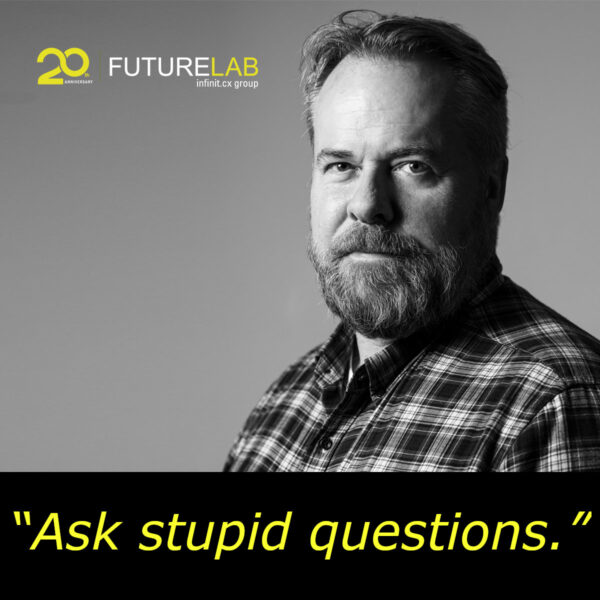The future is scary and there are reasons for it. I have been giving a lot of keynotes lately to different professional organizations and senior executive roundtables and my keynote topic of strategic innovation and design thinking went beyond innovating to find growth and adapting to new economic, market, political and social order.
I shared ideas on the future of economic development, the come-back of manufacturing, developing glocal innovation networks and creative or self-destruction of old establishments and the renewal and transformation of the modern enterprise.
There were never ending questions from the audiences on these topics. I can write a book on them, I guess I won’t have time. I hardly have time to get enough sleep. Everyone is looking for a theory to anchor. The future has never been so uncertain and almost any economic theory invented decades ago has become another working white paper again.
The very old ideas of management and strategy taught in b-schools are so outdated and when I look at the 800+ management books I have on my bookshelf, I am guessing 80% of them are completely irrelevant (50% were irrelevant when they were first written).
Some turn to other knowledge disciplines to look for sources of inspirations. The field of business strategy borrowed heavily from industrial economics and the filed of management sciences borrowed heavily on organizational psychology. What about “Strategic Foresights?” Where can we look for anchors and new inspirations? How about mathematics?
Fuzzy logic is the branch of mathematics that says that science isn’t about absolute truth; it’s just a heap of guesses at a reality that’s much more complicated than that. The term “Fuzzy Logic” emerged in the development of the theory of fuzzy sets by Lotfi Zadeh (1965). A fuzzy subset A of a (crisp) set X is characterized by assigning to each element x of X the degree of membership of x in A (e.g., X is a group of people, A the fuzzy set of old people in X). Now if X is a set of propositions then its elements may be assigned their degree of truth, which may be “absolutely true,” “absolutely false” or some intermediate truth degree: a proposition may be more true than another proposition.
Professor Bart Kosko (Professor of Electrical Engineering in the University of Southern California’s Viterbi School of Engineering and a Professor of Engineering and Law in USC’s Gould School of Law) draws out some pretty interesting applications of that theory. He lost his faith and rediscovers it in science. The fuzzy future is part bog-standard libertarianism (with a side of Reaganomics), part extropian hooting-and-hollering, part small boy reveling in the Tolstoy and Clancy school of military exchange, and part Rube Goldberg engineering of unlikely theory, all bound up in hundred of pages of inscrutable equations in the footnotes.
My teaching on ‘Design Thinking” goes beyond many simple (and shallow) creative tools. Forget those three wheels of design, technology or whatever. Those are complete BS. “Design thinking” is comfortable with change, it is disruptive and provocative by nature, and promotes new ways of looking at problems, often through new lenses. The strategic framing of complex and ambiguous issues requires thinking approaches that are free from organizational dogmas, codified limitations and old assumptions.
A large part of the design thinking process is to step out of roles conventions and free oneself from these dogmas and explore new frames of thought and approaches to problem solving. I am using “Design Thinking” to push us to rethink everything from scratch, including the tools of logic itself. Most people believe creativity means there is no logic. But what is creativity anyway? Or what is design? We need to look at the world or our business or social challenges with a fuzzy prism. It is like watching 3D movies without the 3D glasses. You can never make sense of the present and the future by using conventional lenses and logic.
In a world of full of chaos, unpredictability and fuzziness we need to look at the world through a fuzzy prism. Here is what Dr. Bart Kosco has to say, “How do you upload yourself onto a chip?” The fuzziest fact of all. The problem with current schemes in theory is a binary shock, when all of a sudden you die in meat, and wake up in chip. So how do you do it consciously? We could cut out that little chunk of your brain and replace it with an equally functioning chip, maybe a more powerful chip. We could keep doing it, while you’re wide-awake. So in the end, you’ve completely transferred to a network of chips, and your brain is a bunch of sodium chunks in a jar of formaldehyde.
For the modern enterprise to evolve, survive and even prosper in the future, any change and transformation effort cannot just be putting on bandages. There is no one single future state to map against current state. There could be a range of different strategic futures and companies need to be ready for all of those. It takes a very different kind of transformation process when the future state is unknown.




